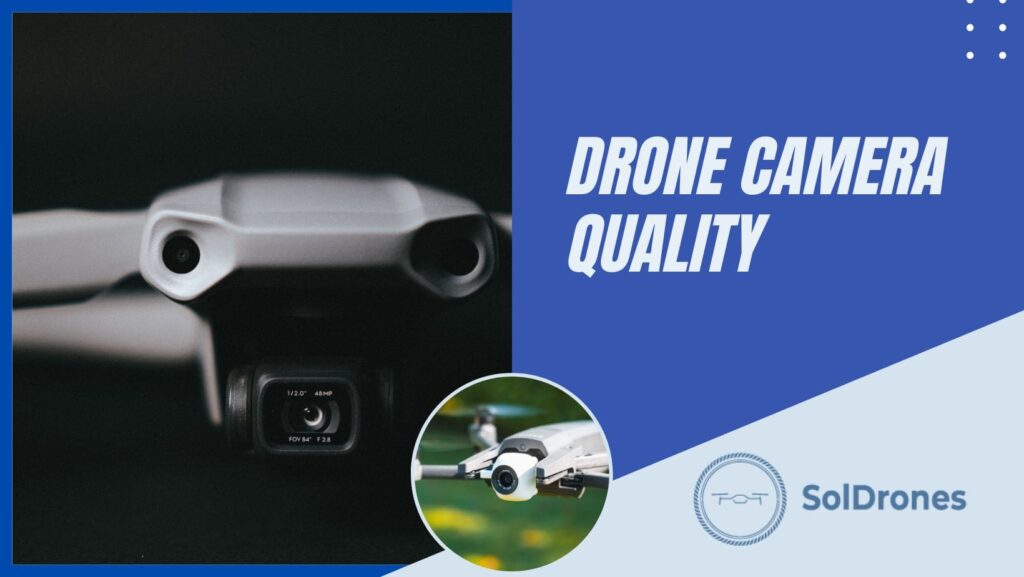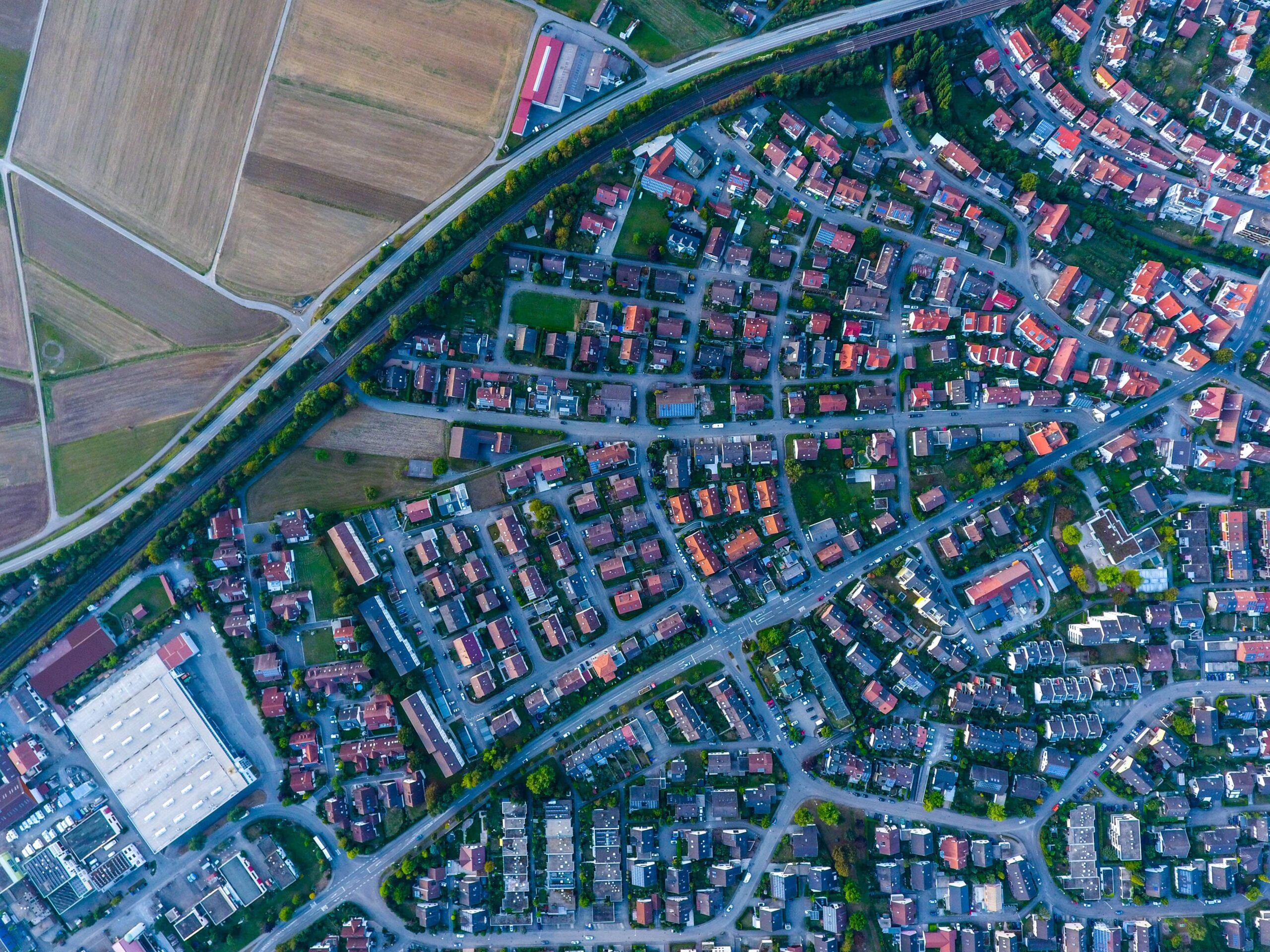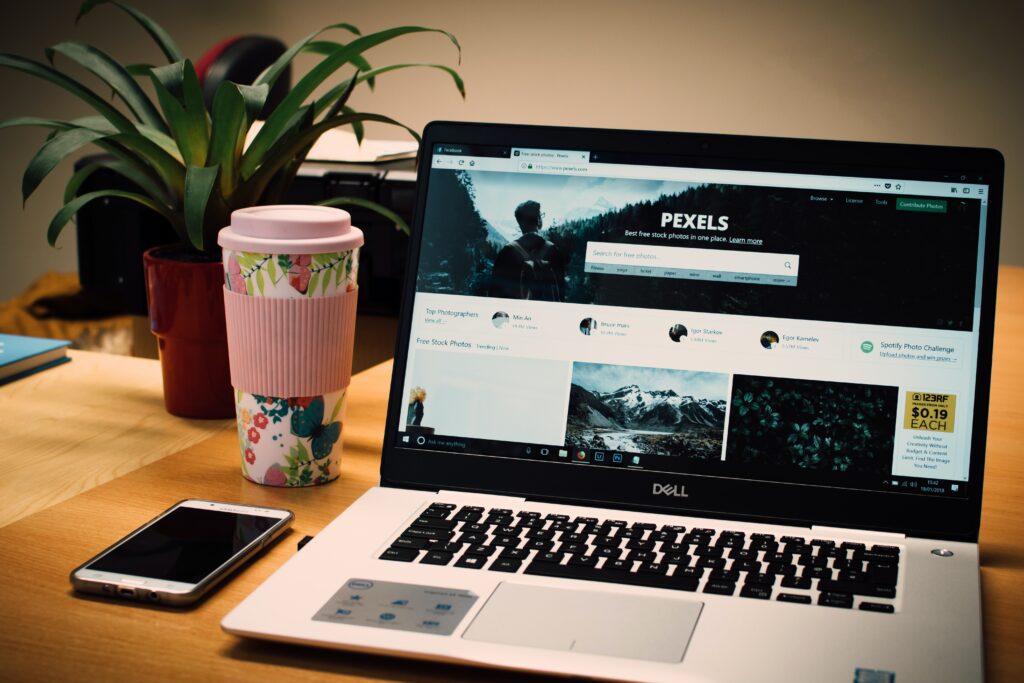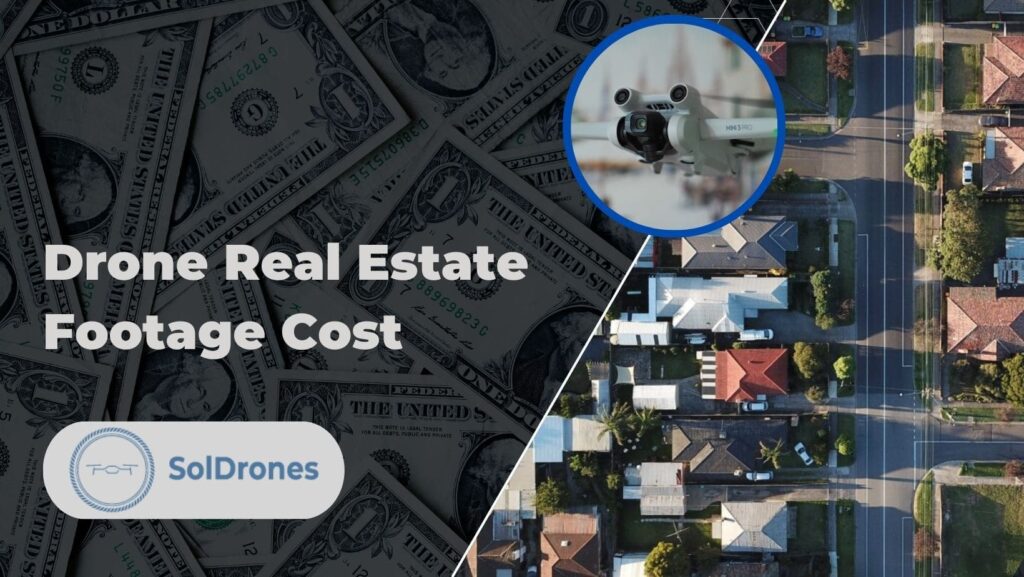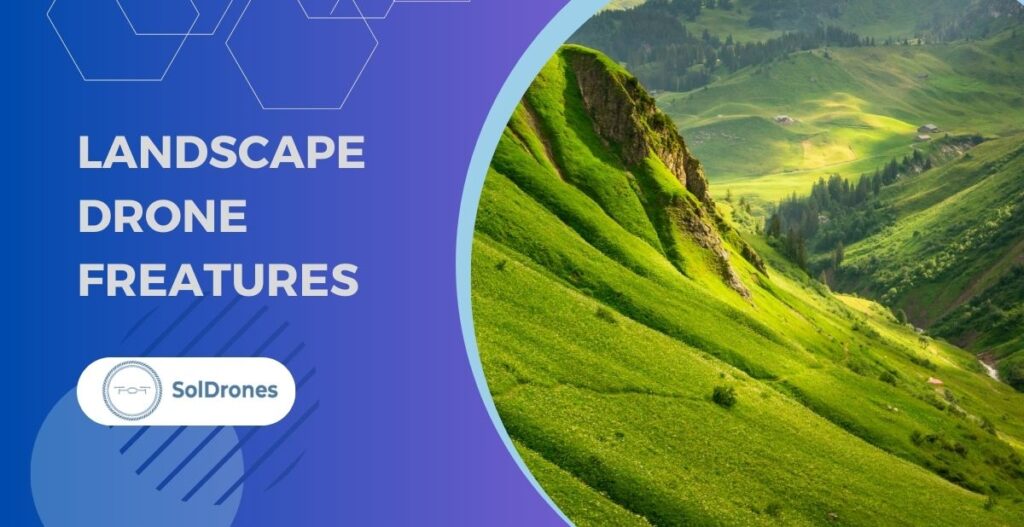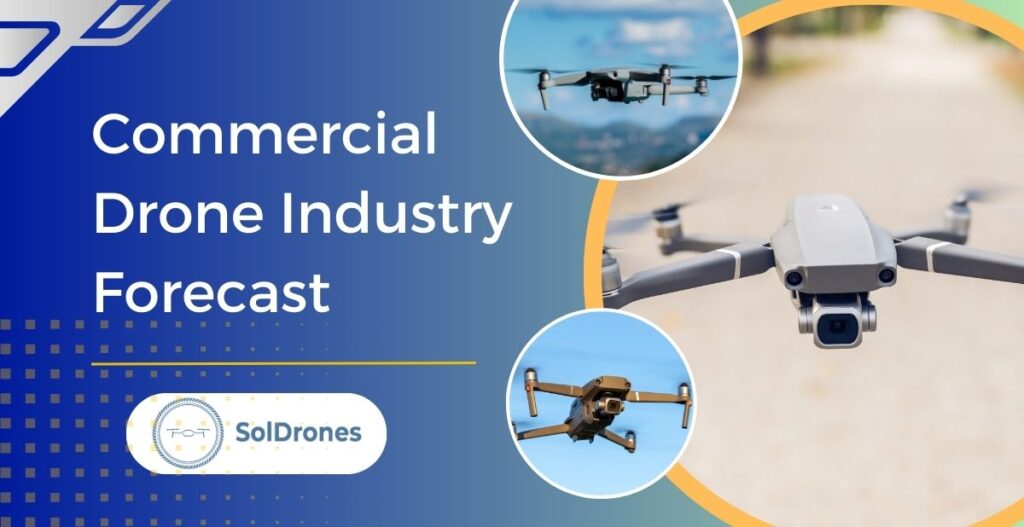Picking the right camera for your drone is key to producing top-notch photos and videos, especially for work tasks. The camera you choose can really shape your drone business.
In this guide, we’ll look at the top 10 things you must check when evaluating a drone camera’s quality and point out some of the best drones on the market that meet these standards.
High-quality drone cameras ensure your scene's best bits are caught accurately and beautifully.
Why Drone Camera Quality Matters
We’ve all seen pictures that are blurry, pixilated, or too dark, and it’s clear these pictures are considered not “good.” Low-quality photos can come from someone not skilled or with poor gear. We take pictures to keep memories alive or to show others what we saw.
When the picture quality is bad, it ruins this goal and turns people off.
Drones give us a special way to take photos from up high or from angles we never thought possible before.
This ability to float and fly in different ways can make your memories feel even more real than from the ground. So, it’s key to have a high-quality drone camera.
The last thing you want is to spend a lot of effort capturing a scene only to find out the pictures didn’t turn out well. High-quality drone cameras ensure your scene’s best bits are caught accurately and beautifully.
- Lightweight and No Registration Required: Weighs under 249 g, eliminating the need for registration in many regions.
- 4K/60fps HDR Imaging: Captures stunning vertical videos in high quality, perfect for day and night scenes.
- Omnidirectional Obstacle Sensing: Enhanced safety with comprehensive obstacle detection, ideal for beginners and experienced users alike.
Key Takeaways
- Drone Camera Resolution
- Frame Rate
- Lens Quality
- Image Senser.
- Image Stabilization
- Low Light Performance
- Dynamic Range
- Raw Image Capture
- Color Accuracy
- Aperture
Drone Camera Quality – Top Factors
There are 10 main things to consider when picking a drone camera that takes clear, bright, and sharp pictures and videos. Knowing these things can help you pick the best drone camera.
1. Drone Camera Resolution
When you see clear and sharp photos, it’s often because the camera is really good at catching fine details. This is all about how many tiny dots, or pixels, the picture has. More dots mean you can see more details.
This is key for snapping top-notch photos, like if you’re a pro at taking pictures.
Take a real estate drone photographer, for instance, who uses a flying camera or drone to snap pictures of a property for sale. A high-detail camera makes sure the photos look great, even on big screens or when printed big. If the detail level is low, the images might look blurry or pixelated, which could put off folks looking to buy. That’s why picking a drone with a high-resolution camera is so important.
Different flying cameras have different levels of detail and capture speeds, which affect how crisp and real your photos and videos will be. When choosing a drone, check out the camera’s detail level and how fast it can shoot. But also keep in mind the drone’s size and weight, how long it can stay up, and other features. All these can influence how well your drone works.
2. Frame Rate
When choosing a drone camera, frame rate matters too. It shows how many photos the camera snaps in one second.
- Higher frame rate = smoother video: When a camera takes more pictures each second, the video seems more fluid. This is perfect for quick shots.
- Lower frame rate = choppier video: If the camera takes fewer pictures each second, the video can seem choppy or harsh.
Here’s a breakdown of common frame rates:
- 24 fps: This is used in movies. It gives videos a cinematic look.
- 30 fps: This is often used for TV shows.
- 60 fps: This is good for sports, where a lot of fast movement happens.
- 120 fps: This rate is used for slow-motion videos. You can see details that you normally would miss.
- 240 fps: This is for taking very slow-motion footage. The drone video will be super smooth and detailed.
When picking your drone camera, think about the videos you plan to shoot. Want super smooth or slow-mo clips – pick one with a high frame rate. For regular video, 30 or 60 fps should do fine.
3. Lens Quality
The lens on your drone camera is super important. A high-quality lens will help you take clearer and more detailed photos and videos.
Here’s why lens quality matters and what types of lenses you might find on a drone:
- Clearer Images – A good lens makes light reach the camera’s sensor accurately. This leads to crisp and bright pictures with minimal distortion.
- Better Detail – High-quality lenses grab tiny details, making your photos pop and seem real.
- Less Blurriness – Bad lenses can make shots look fuzzy or warped, mainly when taken from high up.
Common Drone Lenses:
- Wide-angle Lenses – Perfect for landscape and architectural shots. They show a broad view.
- Telephoto Lenses – Great for zoomed-in photos of far subjects like wildlife. They have a narrow field of view.
- Zoom Lenses – These let you change how far you can see. You can switch from wide-angle to zoom-in shots without swapping lenses.
- Prime Lenses – Lenses with one focus point are often used for low-light photography or portraits.
- Fish-eye Lenses: Known for bold, distorted perspectives and a super broad view.
When picking a lens, check if it fits your drone and meets your photo goals. The right lens will boost the look of your aerial shots.
4. Image Sensor
The camera sensor in a drone is key component – it grabs the light coming through the lens and turns it into data you can see. How big and good this sensor is will make your photos better or worse, especially in low-light conditions.
Here’s why a larger image sensor is important:
- Big sensors collect more light, so they’re better for taking shots in low light.
- They also grab more detail of the scene, making clearer pictures.
- Top-notch sensors show truer and brighter colors in your snaps.
Common image sensor sizes in drone cameras include:
- 1/2.3 inch – Usually seen in consumer-level drones, this is a tinier sensor that might not work great in low light.
- 1 inch – Bigger than 1/2.3 inch, used often in high-end drones for better low-light performance.
- Micro Four Thirds (MFT) – Medium-sized sensor used in mid-range drones mixes performance and fair cost.
- APS-C – Bigger sensors, like the ones in DSLR cameras, found in some high-end drones.
- Full-frame – The biggest sensor, often seen in professional-grade cameras, gives the best picture quality.
5. Image Stabilization
Image stabilization is key in any top drone camera. It helps make your pictures and videos smooth, even when the drone moves.
This tech minimizes the shake and other movements that could mess up a shot. With solid image steadying, you don’t have to stress over shaky footage. This is very important for pro-quality results.
Whether you’re shooting a pretty view or quick action, good image stabilization keeps your footage sharp and even. This makes your videos nicer to watch and your photos more striking to look at.
6. Low Light Performance
How well a camera works in dim light, like at dusk or in shadowy places, is key for drones that need to film any time of day. This is a must for pro shots. A top camera for low light will give you clear, vivid pictures. If the camera is weak in low light, your photos might come out blurry and rough.
The camera sensor is really big here. Larger sensors catch more light, which is great in dark areas. The quality of the lens and the size of the camera’s opening also matter. A good lens and a wide opening let in more light, making the picture better.
When choosing a drone, look at how good it is in low light. This will make sure your shots are good, no matter the lighting.
7. Dynamic Range
The dynamic range shows how a camera sees the light and dark spots in a photo. It tells how well it can grab bright lights and deep shadows. When you fly a drone, you often see bright skies and dark land at the same time. A camera with a big dynamic range can catch more details here, making photos look real and full of life.
If your drone’s camera can’t grab a wide mix of light and dark, your pictures might lose details. The bright parts could be too bright, and the dark spots too dark. This can make your photos look flat and less nice.
8. Raw Image Capture
Shooting photos in RAW with a drone is a big win. RAW images save all the info from the camera sensor with no edits. This means you can change your photos a lot more when fixing them up later.
With RAW, you can adjust light, colors, and more without losing detail. This is great for drone shots because the lighting conditions can change a lot. By using RAW, you make sure your aerial photos look their best.
9. Color Accuracy
Color accuracy is how well a camera shows the true colors of what you snap. When you shoot sky shots with a drone, you see lots of colors like blue skies, green leafy tops, and brown earth. A good camera makes these hues look real and bright, giving your shots life. If the camera color accuracy is not right, then the colors may look wrong or too vivid, making your shots look less nice.
10. Aperture
The aperture, or lens gap, in drone photography, is like the eye’s pupil. It decides how much light comes into the camera. This is told by f-stops, like f/2.8 or f/11. A lower f-stop number means a wider gap, bringing in more light. This can blur the background behind your main thing, making it pop out.
On the flip side, a higher f-stop number means a tinier gap, letting in less light. This keeps more of the view sharp, ideal for wide shots where you want everything clear.
So, by changing the opening, you can get the best shot you want.
Read More: How to Start a Drone Photography Business
Drones with the Best Cameras
Here are some of the top drones you can get for photography and videography:
DJI Phantom 4 Pro
The DJI Phantom 4 Pro shines with its 20-megapixel camera and big 1-inch CMOS sensor. It can record amazing 4K videos at 60 frames per second. It also has a long-lasting battery and can fly as fast as 45 mph. This makes it both strong and able to do many things.
- Advanced Imaging Technology: Equipped with a 3-axis motorized gimbal and 1-inch 20MP CMOS sensor with a mechanical shutter for high-quality, distortion-free images.
- Enhanced Viewing and Control: Features a 5.5-inch 1080p LCD screen on the remote controller for clear visibility in direct sunlight.
- Superior Flight Performance: Boasts a maximum speed of 72 kph, 8km transmission range with 1080p livestreaming, and OcuSync 2.0 for efficient frequency switching.
DJI Mavic 2 Pro
The DJI Mavic 2 Pro has a top-notch Hasselblad camera with a 1-inch CMOS sensor, capable of capturing 4K video fast at 60 fps. Its foldable design is great for photographers who travel a lot.
Read More: Best Recreational Drone to Try this 2024
DJI Inspire 2
Made for pro-level filming, the DJI Inspire 2 comes with a two dual-camera setup that can capture high-quality 5.2K video at a speed of 60 frames every second. It’s one of the fastest drones, reaching speeds of 58 mph, and has a battery that lasts long for more shooting sessions.
Parrot Anafi
The Parrot Anafi is a great pick, with a 21-megapixel camera using a Sony IMX230 sensor. It takes 4K video at 60 frames per second and is super light, at just 0.7 lbs. Its foldable design makes it easy to take anywhere.
Yuneec Typhoon H Pro
The Yuneec Typhoon H Pro has a 12-megapixel camera with a 1-inch CMOS sensor. This drone can film in 4K at 60 frames every second. It also lasts long on a charge and can fly as fast as 43 mph, perfect for quick-moving shots.
How to Make Money as A Drone Photographer
So, now that you have a top-notch drone with a great camera, how can you turn your hobby into a source of income? here are three ways to get started:
1. Selling Stock Photos
You can put your drone photos on websites like Pexels, Shutterstock, Stock, or Adobe Stock. These sites let you sell your pics, and you get a cut from each buy. This is a smart way to make steady money since your shots can be sold to anyone who needs high-quality, unique images.
2. Real Estate Photography
Drone photos are great for showing off real estate, like big outdoor spots or unique buildings. You can team up with real estate agents to snap aerial shots of houses and business places for sale. These shots make properties stand out in listings and can draw in more folks looking to buy.
3. Offering Aerial Photography Services
Folks and companies often want photos from the sky for things like construction projects, big events, or advertising campaigns. You can use your drone to take these pictures for them. You can also make videos for productions like music videos, TV ads, or movies. This work can be shaped to fit what each client needs and can make you good money.
The Takeaway
Picking the right camera for your drone is key to taking great shots and videos, especially for work. A high-quality camera makes images sharp and bright and works well in different lighting. By looking at picture clarity, how smooth videos are, lens quality, and if the camera keeps your shots steady, you can boost your drone photography quality and earn more.
You can make money in different ways, like selling shots online, taking pictures of houses for sale, or capturing aerial views for events.
If you’re not sure how to begin or need help with what you need and where to find work, SolDrones is here to help. We offer expert advice, right tools, and connect you to many opportunities to succeed in drone photography.

